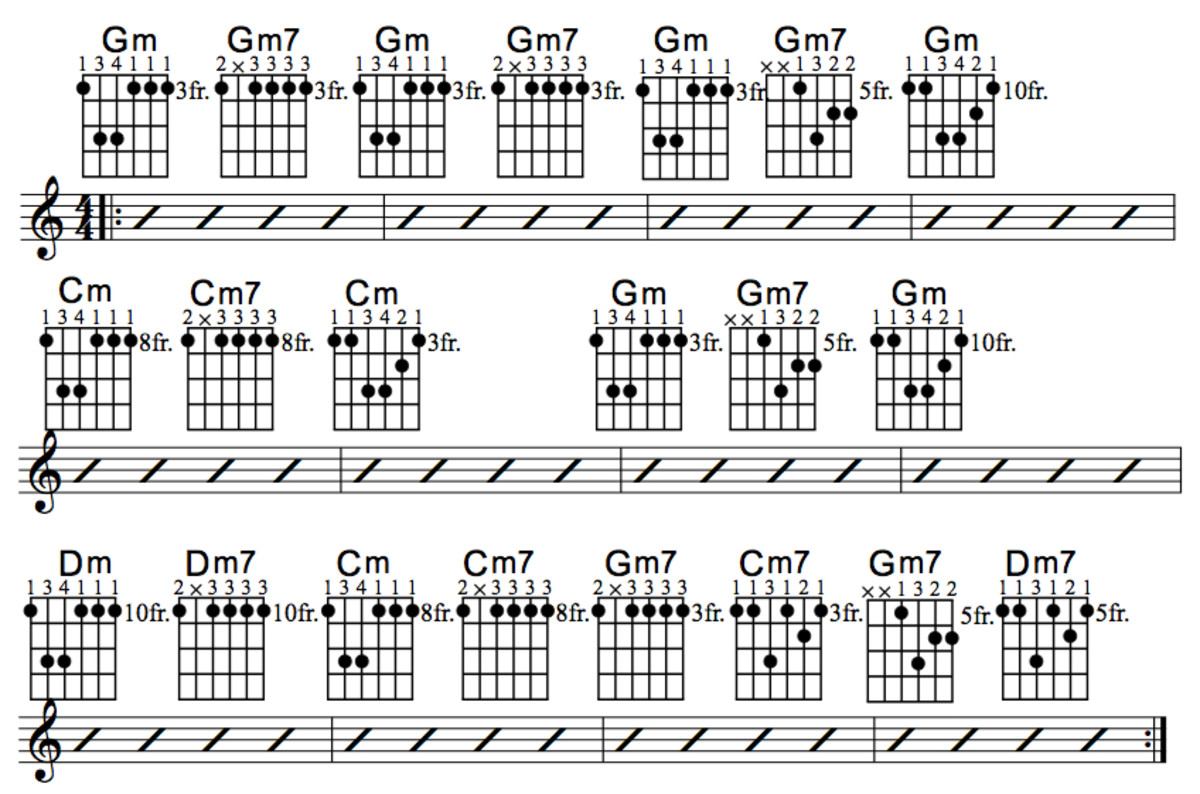

G – Am – Bm – C – D Chord progressions as outro and it can tone color can be variated even further by including some substitutions:Ĭmaj9 - Em9 - Am11 - Fmaj7 - G13 - Cmaj7 Chord streamsĪ category of progressions that involve diatonic chords that follows the scale order: There are more extended chords besides the 7th and the use of different extended chords adds more "color". Progressions including 7th chordsħth chords can create some flavor to progressions.Īm7 – E7 – Dm7 - G7 Progressions including various extended chords In longer progressions, there is often a need for mixing major and minor chords. Progressions with 4 chords (including minor chords) So far, only major chords have been involved – let’s add some minor chords. Your browser does not support the audio element. See also traning with metronome tempos and strumming. If you want, you can use the hi-hat metronome (80 bpm). See the I - IV - V and I - IV - V7 progressions in all keys. They can be written in Roman numerals as I - IV - V, which represent this certain sequence of chord degrees that can be transposed to all keys. This are the form av the most common progressions that exist in guitar playing. Normally, in vamps, chords can be hold on to longer, for example, two bars each.Ĭommon progressions using only three chords: These progressions are not directly mind-boggling, but are included here for the sake of completeness and also to make you familiar with a term that you may encounter once in a while. Progressions using only two chords are sometime called vamps (a vamp can also be just a single chord played). See also Chord progressions in famous songs. It starts with fundamental and easy progressions that include few chords and continues with progressions with more chords (the first in most categories is presented by diagrams otherwise, the chord names can mostly be clicked on if you need to look them up). On this page you will be presented to typical chord progressions. It is easy in theory, but the delicate aspect is to find great, and perhaps original, combinations. Three, four, five chords or so following after each other forms a progression. The chord shapes in the following diagrams will make much more sense if you have a basic understanding of that system.A chord progression is a sequence of chords. If you’re not familiar with the term CAGED, you may want to read the CAGED system lesson before continuing. Let’s break this progression down position by position. The diagram below shows the root positions of the I – IV – V chord progression in the key of G in all 5 positions of the G major scale. Any chord progression can be played in any position on the neck. However, there comes a point where we need to expand our chord vocabulary, and this can be accomplished through playing chords in different positions on the fretboard. From there we progress to the basic barre chord with the index finger barring across 5-6 strings.

When first learning guitar we typically start with learning open chords.

Second, it gives the quality of the chord created from that note.įor more in-depth information on chords of a key, check out Building Chords from the Major Scale.įrom this table you can see that a I-IV-V chord progression in the key of G consists of the chords G major, C major, and D major. G is the first note, A is the second note, and so on. The Roman numerals indicate two things.įirst, it tells the position of the note in the scale. If you’re not familiar with using Roman numerals to describe chord progressions, check out the guitar number system lesson. In this example, we’re going to use a I-IV-V chord progression in the key of G. I – IV – V chord progression in the key of G Let’s take a look at a common chord progression to see how this works.

What I mean by this is pick a position on the neck and play all of the chords of the progression in that single position rather than moving to familiar chord shapes we already know. Expand Your Knowledge of Guitar Chords by Playing Chord Progressions by PositionĪ good way to become more familiar with the various guitar chord shapes is by playing chord progressions by position all over the fretboard.


 0 kommentar(er)
0 kommentar(er)
